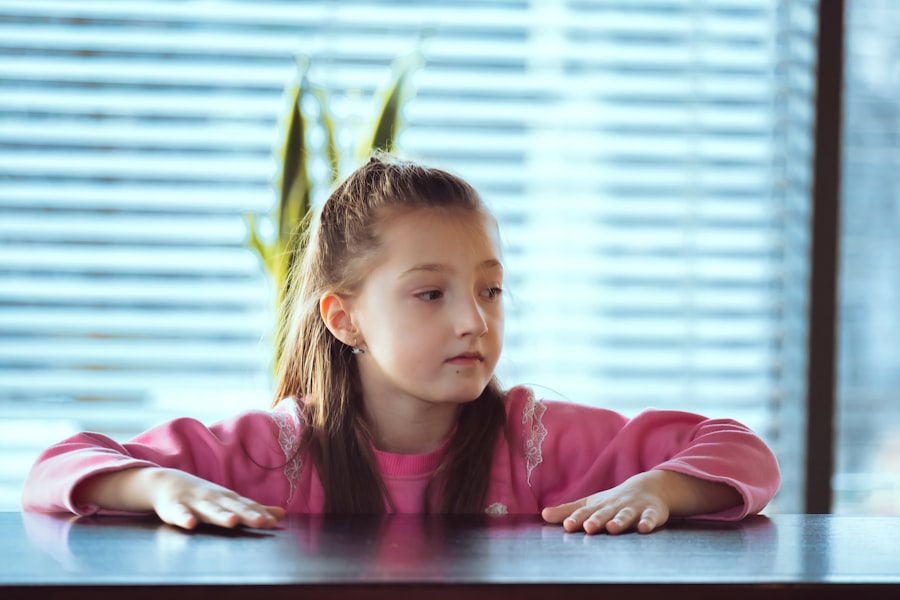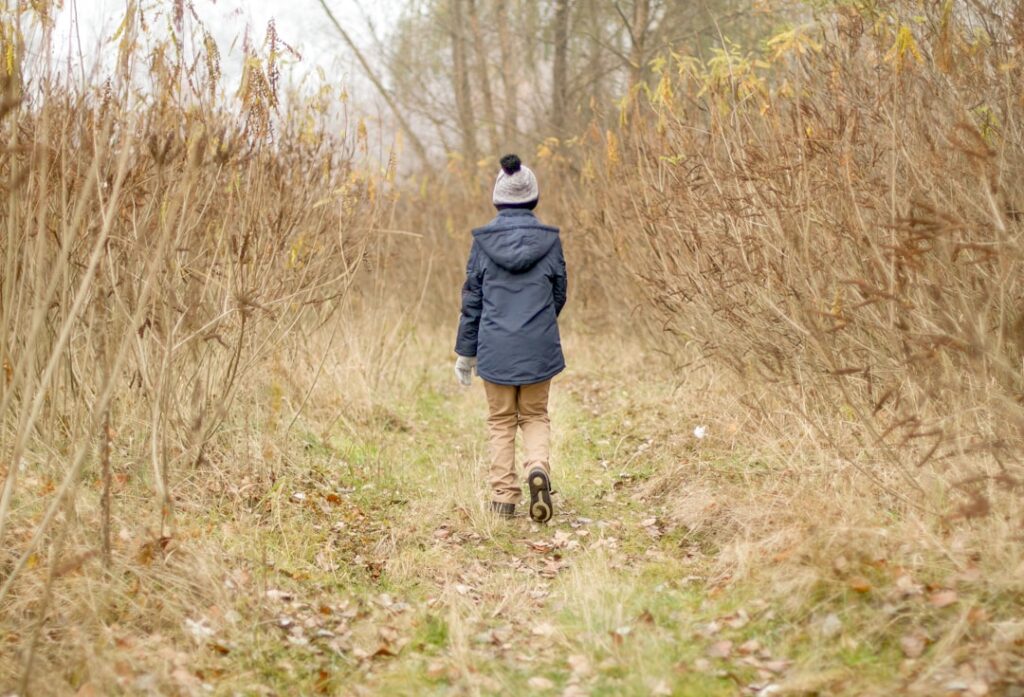Anxiety in children is a complex emotional response characterized by feelings of fear, worry, and apprehension. It is a normal part of childhood development, as children often experience anxiety in response to new situations, changes, or challenges. However, when these feelings become overwhelming or persistent, they can interfere with a child’s daily life and development.
Anxiety disorders in children can manifest in various forms, including generalized anxiety disorder, separation anxiety disorder, social anxiety disorder, and specific phobias. Each of these disorders presents unique challenges and requires tailored approaches for effective management. Understanding anxiety in children involves recognizing that their emotional responses may differ significantly from those of adults.
Children may not have the vocabulary or emotional maturity to articulate their feelings, leading to expressions of anxiety that can be misinterpreted as behavioral issues. For instance, a child who is anxious about attending school may exhibit clinginess or tantrums rather than verbalizing their fears. This disconnect can complicate the identification and treatment of anxiety, making it essential for parents, educators, and caregivers to be attuned to the subtleties of children’s emotional expressions.
Key Takeaways
- Anxiety in children is a normal part of development, but when it becomes excessive and interferes with daily life, it may be a cause for concern.
- Signs and symptoms of anxiety in children can include excessive worry, physical symptoms like stomachaches or headaches, avoidance of certain situations, and difficulty sleeping.
- Common triggers for anxiety in children can include academic pressure, social situations, family conflict, and major life changes.
- Anxiety can impact children’s development by affecting their academic performance, social relationships, and overall well-being.
- Strategies for managing anxiety in children can include promoting a healthy lifestyle, teaching relaxation techniques, and providing a supportive and understanding environment.
Signs and Symptoms of Anxiety in Children
The signs and symptoms of anxiety in children can vary widely, often depending on the child’s age and personality. Common indicators include excessive worry about everyday situations, such as school performance or social interactions. Children may also exhibit physical symptoms like stomachaches, headaches, or fatigue, which can be manifestations of their internal distress.
Behavioral changes are also prevalent; a previously outgoing child may become withdrawn or refuse to participate in activities they once enjoyed. These changes can be subtle but are often significant markers of underlying anxiety. In addition to these behavioral and physical symptoms, children may display cognitive signs of anxiety, such as difficulty concentrating or an overwhelming sense of dread about future events.
They might engage in avoidance behaviors, steering clear of situations that trigger their anxiety. For example, a child with social anxiety may refuse to attend birthday parties or playdates due to fear of judgment or embarrassment. Recognizing these signs early is crucial for intervention, as untreated anxiety can lead to more severe mental health issues later in life.
Common Triggers for Anxiety in Children

Anxiety in children can be triggered by a variety of factors, both external and internal. Common external triggers include significant life changes such as moving to a new home, changing schools, or experiencing the loss of a loved one. These events can create feelings of instability and uncertainty, leading to heightened anxiety levels.
Additionally, academic pressures and social dynamics can contribute significantly to a child’s anxiety. The competitive nature of school environments and the desire for peer acceptance can create a perfect storm for anxious feelings to flourish. Internal triggers often stem from a child’s temperament and personality traits.
Some children are naturally more sensitive or prone to worry than others. For instance, a child with a perfectionist streak may experience anxiety when faced with the possibility of failure or making mistakes. Similarly, children who have experienced trauma or adverse childhood experiences may be more susceptible to anxiety triggers due to their heightened state of alertness and fear.
Understanding these triggers is essential for parents and caregivers to help children navigate their emotional landscapes effectively.
The Impact of Anxiety on Children’s Development
| Age Group | Impact of Anxiety |
|---|---|
| Preschool (3-5 years) | Difficulty in socializing, separation anxiety, trouble sleeping |
| Elementary School (6-11 years) | Academic struggles, behavioral issues, physical symptoms like stomachaches and headaches |
| Adolescence (12-18 years) | Higher risk of depression, substance abuse, impact on academic performance |
The impact of anxiety on children’s development can be profound and far-reaching. When anxiety becomes chronic or severe, it can hinder a child’s ability to engage fully in educational and social experiences. Academic performance may suffer as anxious children struggle to concentrate or participate in class discussions due to fear of being judged or making mistakes.
This academic decline can lead to a cycle of negative self-perception and increased anxiety, further exacerbating the issue. Socially, anxious children may find it challenging to form friendships or engage in group activities. Their avoidance behaviors can lead to isolation, which can have long-term consequences on their social skills and emotional well-being.
Over time, this isolation can contribute to feelings of loneliness and depression, creating a complex interplay between anxiety and other mental health issues. Furthermore, the longer anxiety persists without intervention, the more ingrained it becomes in a child’s identity, potentially leading to lifelong struggles with mental health.
Strategies for Managing Anxiety in Children
Managing anxiety in children requires a multifaceted approach that combines understanding, support, and practical strategies. One effective method is cognitive-behavioral therapy (CBT), which helps children identify negative thought patterns and replace them with more constructive ones. Through CBT, children learn coping mechanisms that empower them to face their fears gradually rather than avoid them altogether.
This therapeutic approach has been shown to be particularly effective for various anxiety disorders in children. In addition to professional therapy, parents can implement strategies at home to help manage their child’s anxiety. Establishing routines can provide a sense of stability and predictability that anxious children often crave.
Encouraging open communication about feelings allows children to express their worries without fear of judgment. Mindfulness practices such as deep breathing exercises or guided imagery can also be beneficial in helping children calm their minds during moments of heightened anxiety. These strategies not only help alleviate immediate symptoms but also equip children with tools they can use throughout their lives.
Seeking Professional Help for Childhood Anxiety

Seeking Professional Help for Childhood Anxiety
When anxiety becomes overwhelming or persistent, it is crucial to seek professional help for the child’s well-being. Mental health professionals specializing in childhood disorders can provide tailored interventions that address the specific needs of the child.
### Therapy Interventions
This may include therapy options such as play therapy, which allows younger children to express their feelings through play rather than words, or family therapy that involves parents in the treatment process.
### Medication as a Treatment Option
In some cases, medication may be recommended as part of a comprehensive treatment plan for childhood anxiety disorders. While medication is not always necessary, it can be beneficial for children with severe symptoms that significantly impair their daily functioning.
### Determining the Best Course of Action
A thorough evaluation by a qualified mental health professional is essential to determine the most appropriate course of action based on the child’s unique circumstances.
Creating a Supportive Environment for Anxious Children
Creating a supportive environment for anxious children is vital for fostering resilience and emotional well-being. Parents and caregivers play a crucial role in this process by providing consistent reassurance and understanding. Establishing an open dialogue about emotions helps normalize feelings of anxiety and encourages children to share their experiences without fear of stigma or misunderstanding.
Additionally, fostering a sense of security at home can significantly alleviate anxiety levels. This includes maintaining predictable routines, offering praise for small achievements, and encouraging healthy risk-taking in safe environments. For instance, allowing a child to try new activities while providing support can help build confidence and reduce avoidance behaviors over time.
Schools also play an essential role; educators should be trained to recognize signs of anxiety and create inclusive environments that accommodate anxious students’ needs.
Helping Children Build Coping Skills for Anxiety
Equipping children with coping skills is one of the most effective ways to manage anxiety long-term. Teaching children techniques such as deep breathing exercises can help them calm themselves during moments of distress. For example, guiding them through a simple breathing exercise—inhale deeply through the nose for four counts, hold for four counts, then exhale slowly through the mouth for four counts—can provide immediate relief during anxious moments.
Encouraging problem-solving skills is another vital aspect of building resilience against anxiety. When faced with challenges that trigger their anxiety, guiding children through brainstorming potential solutions fosters independence and confidence in their ability to handle difficult situations. Role-playing scenarios where they practice social interactions or confront fears in a safe space can also empower them to face real-life situations with greater ease.
In conclusion, addressing childhood anxiety requires a comprehensive understanding of its nature, symptoms, triggers, and impacts on development. By implementing effective strategies for management and creating supportive environments, caregivers can help anxious children navigate their emotions more effectively while building essential coping skills for the future.

